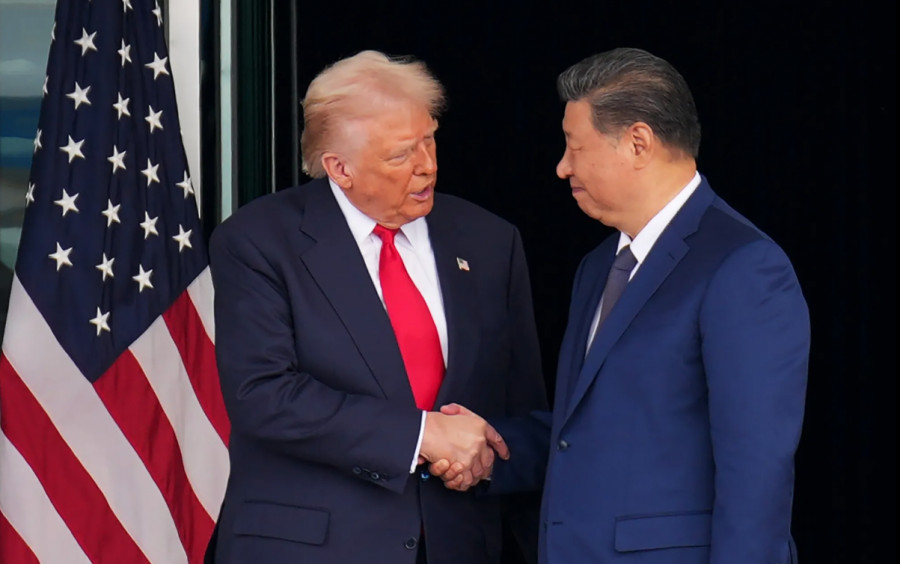At a landmark summit held yesterday, Donald Trump and Xi Jinping agreed to extend the tariff truce, ease export controls, and reduce other trade barriers — moves that could potentially stabilize relations between the world's two largest economies after months of turmoil.
This long-awaited news brought a wave of relief to global financial markets. Investors, weary of the constant uncertainty caused by the trade war, saw the agreement as a signal of easing tensions and a return to economic cooperation. Currency markets responded with a rise in the U.S. dollar.
However, despite the prevailing optimism, analysts are warning of the need to remain vigilant.
During their first meeting, the leaders agreed that China would suspend its total control over rare earth metals in exchange for what Beijing called a U.S. agreement to cancel the expansion of restrictions on Chinese companies. The U.S. will also cut tariffs in half on Chinese goods related to fentanyl, while Beijing will resume purchases of soybeans and other American agricultural products.
China's Ministry of Commerce stated that the U.S. will also extend the suspension of certain so-called reciprocal tariffs on China "for another year," adding that China will properly address issues related to TikTok with the American side. Trump announced that he would visit China in April next year, and Xi Jinping plans to travel to the U.S. afterward.
"On a scale from zero to ten, with ten being the highest, I'd rate the meeting a twelve," Trump told reporters after meeting Xi Jinping in Busan. "You know, the relationship itself is very, very important. I think everything went really well."
Shortly after, Treasury Secretary Scott Bessent stated that the agreement would be signed in the coming days:
"I expect we'll exchange signatures, possibly as soon as next week."
According to China's Xinhua News Agency, Xi Jinping emphasized that dialogue is better than confrontation, calling for closer communication between the two sides and cooperation in areas such as trade, energy, and artificial intelligence.
The outcome, at least for now, should bring an end to months of trade brinkmanship during which the U.S. and China threatened to impose a series of tariffs and export controls on each other's goods — actions that could have again disrupted global supply chains and harmed the world economy. Nevertheless, this is not a comprehensive agreement that resolves the deeper issues underlying U.S.–China economic rivalry.
A separate issue concerns Nvidia chips. Despite speculation that Trump might make additional concessions — including granting U.S. access to Nvidia's most advanced Blackwell processors — the president made it clear that these matters were not discussed. However, Trump and Xi did discuss access to some other Nvidia products: the U.S. president said he plans to speak with Nvidia CEO Jensen Huang in the near future.
Later, in a post on Truth Social, Trump added that U.S. and Chinese officials will soon meet to discuss cooperation in the energy sector.
"China has also agreed to begin the process of purchasing American energy resources," Trump wrote. "In fact, there could be a very large deal for the purchase of oil and gas from the great state of Alaska."
As mentioned above, the U.S. dollar continues to be in demand on the currency market.
Regarding the current EUR/USD technical picture, buyers now need to think about reclaiming the 1.1580 level. Only that will allow a move toward testing 1.1610. From there, the pair could reach 1.1640, although doing so without the support of large market players will be rather difficult. The furthest target is the 1.1695 high. In case of a decline to around 1.1550, I expect some serious buying activity. If no major buyers appear there, it would be prudent to wait for an update of the 1.1520 low or consider opening long positions from 1.1489.
As for the current GBP/USD technical picture, pound buyers need to reclaim the nearest resistance at 1.3175. Only then will it be possible to aim for 1.3220, above which breaking through will be quite difficult. The furthest target is the 1.3245 level. In case of a decline, bears will try to regain control at 1.3115. If successful, breaking below this range would deal a serious blow to the bulls and push GBP/USD down to a 1.3075 low, with the potential to reach 1.3030.












